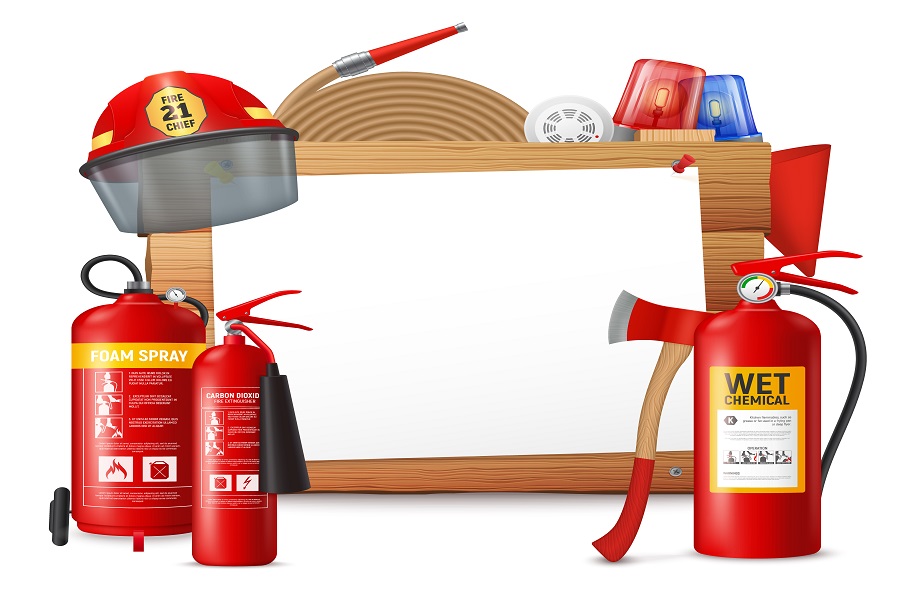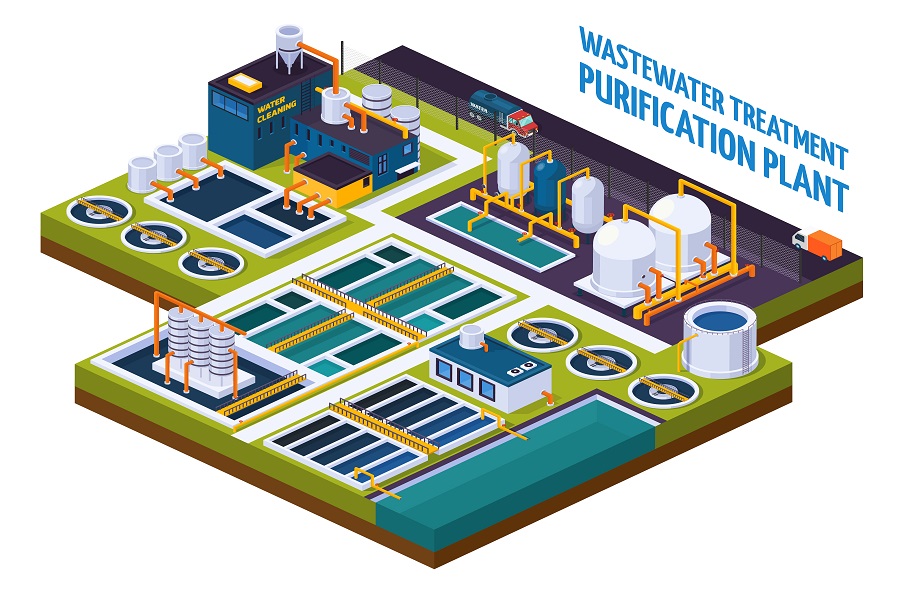While we think fire to be a rare occurrence; in reality, a fire breaks out every 23 seconds. Just a year ago, the United States Fire Department responded to an estimated 1.5 million fires that caused an estimated property damage of $18 billion.
Fire breakouts can happen at any place, at any time. It damages buildings, assets, lives – everything that comes in its way. That’s why, it is important to protect our commercial, residential, and industrial settings with a fool-proof Firefighting system that not only protects us during a fire breakout but prevents it from happening in the first place.
However, when it comes to fire safety, we get to hear a lot of terms around – fire protection, fire prevention, fire suppression systems, and more. While often used interchangeably, these terms are quite different from each other – both in meaning and purpose.
Understanding the key differences between them is important for implementing an effective fire safety strategy for your building.
What is a Fire Protection System?
Fire protection system is an umbrella term that includes a comprehensive network of equipment and devices that are used to prevent, detect, and suppress fires in buildings and other structures.
The primary goal of the fire protection system is to stop the spread of fire and protect occupants and property from the devastating effects of fires.
Its other role is to slow down the spread of fire, limiting its intensity and the amount of repair work involved. So, fire protection systems not only prevent fire but also contain fire in one part of the building so that repair works are minimal.
The Essential Components of a Fire Protection System
Fire protection systems typically include:
- Fire Detection System: It includes smoke detectors, heat detectors, and fire alarms
- Fire Suppression Systems: These comprise fire sprinklers, foam systems, and clean agent systems that are used to suppress or extinguish fires.
- Emergency Lighting and Exit Signs: Emergency lighting and exit signs guide occupants to safety in the event of a fire, even in low visibility conditions.
- Fire Doors and Fire-Rated Materials: They help to contain fires and prevent their spread.
- Fire Safety Training: Safety procedures and evacuation protocols taught to occupants to respond effectively in the event of a fire.
Overall, the aim is to provide the widest possible window for safety from fire, so as to reduce the damage caused to equipment, assets, and life.
Types of Fire Protection Systems
Fire protection systems are categorized into two categories: Active and Passive.
While active fire protection systems help to fight fires with alarms or trigger sprinkler systems to stop a fire, passive fire protection uses walls and other structural supports to minimize flammability and the spread of smoke.
What is Fire Prevention?
As the name suggests, fire prevention focuses on reducing the likelihood of fire in the first place. It involves identifying and eliminating potential fire sources, controlling fire hazards, and implementing safe work practices. Fire prevention measures include:
- Proper storage of flammable materials
- Regular maintenance of electrical systems
- Implementing safe work practices
- Fire-resistant building materials
- Fire-rated walls and doors
- Compartmentalization
Fire prevention is an essential component of fire safety and should be implemented along with other measures to provide comprehensive protection against fires.
What is Fire Suppression?
Fire suppression refers to the methods and systems used to extinguish or control fires only once it has started. It involves the use of fire extinguishers, sprinkler systems, and other suppression agents to suppress or extinguish fires and limit their spread.
Components of Fire Suppression Systems
- Fire Extinguishers: Portable fire extinguishers are used to extinguish small fires or contain them until the fire department arrives. They contain different types of extinguishing agents, such as water, foam, dry chemical, or carbon dioxide, depending on the type of fire an area of use.
- Sprinkler Systems: Automatic fire protection sprinkler systems are installed in buildings to automatically release water or other suppression agents when a fire is detected. They are highly effective in controlling fires and preventing their spread.
- Specialized Suppression Systems: Specialized suppression systems, such as clean agent systems or foam systems, are used in specific applications where water-based suppression is not suitable, such as data centers or chemical storage areas.
Types of Fire Suppression System
Fire Sprinkler Systems (Wet, Dry, Pre-Action and Deluge)
Fire sprinkler systems form the main component of the fire suppression system. They are designed to automatically detect and extinguish fires in buildings. Sprinkler systems consist of a network of pipes, sprinkler heads, and control valves that are strategically installed throughout a building to provide comprehensive fire protection to the residents and their assets.
However, fire sprinkler system design demands specialized expertise and experience to ensure optimal performance and compliance with safety standards. It involves careful consideration of factors such as building layout, occupancy type, fire risk, and local building codes. A qualified fire protection engineer uses advanced CAD tools to design fire sprinkler systems, ensuring that the sprinkler design layout is proper and the sprinkler head is accurately sized, located, and configured to effectively suppress fires and protect occupants and property.
Additionally, fire sprinkler systems must be regularly inspected, tested, and maintained to ensure their continued reliability and effectiveness. That’s why, it is important to work with a reputable fire protection company to design, install, and maintain fire sprinkler systems in accordance with industry best practices and regulatory requirements.
Gaseous Agents
These substances are designed to disrupt the chemical combustion process of fire. They leverage molecular-level intervention to rapidly fire suppression, often achieving results within seconds rather than minutes. Unlike traditional fire sprinkler systems that primarily focus on fire control, gaseous fire systems are designed specifically for fire extinguishment.
Wet and Dry Chemical Agents
Dry Chemical Fire Suppression Systems employ dry chemical compounds like ABC for effective fire suppression.
Conversely, Wet Chemical Systems find their place in kitchen fire suppression systems. In it, liquid agents are used to combat cooking fires. Liquid sprays promptly react with fats and oils, producing foam that rapidly cools the surface and prevents fire reignition.
Water
Water-based suppression systems utilize water, a readily available and cost-effective medium, to eliminate fire via a fixed piping system. Different types of water-based fire protection systems exist; the one most suitable for you is determined by the fire hazard or risk involved.
Fire Protection Vs. Fire Suppression: The Key Difference
| Fire Protection | Fire Suppression |
| Fire protection focuses on preventing fires from occurring or spreading | Fire suppression involves extinguishing or controlling fires once they have started |
| It is a proactive method that aims to reduce the risk of fires. | It is a reactive method that responds to fires as they occur. |
| Fire protection measures include fire prevention, building design, and detection and alarm systems | Fire suppression systems include fire extinguishers, sprinkler systems, and specialized suppression systems. |
| The process involves identifying and eliminating potential ignition sources, controlling fire hazards, and implementing safe work practices | The system uses various methods and agents to suppress fires, including water, foam, gas, and chemical agents |
Which Fire Fighting Approach Should You Adopt?
When it comes to fire protection vs. fire suppression, making a choice needs careful evaluation of a lot of factors like the type of building, the nature of the fire risk, and the specific requirements of the occupants. Both fire protection and fire suppression are essential components of a comprehensive fire safety strategy. While fire protection focuses on preventing fires from occurring in the first place, fire suppression is designed to respond to fires that have already started.
In most cases, a combination of fire protection and fire suppression measures is the most effective way to ensure the safety of occupants and assets.
At Enginerio, we can help you design foolproof fire strategies for your buildings and assets. Our team ensures accurate, innovative CAD drawings compliant with NFPA and API standards. From creating on-point Revit fire protection models to performing hydraulic calculations to designing pipe and sprinkler design layouts, we cover all aspects of fire system design efficiently. Trust Enginerio for your fire protection needs and get meticulous fire protection solutions on time and within your budget.






